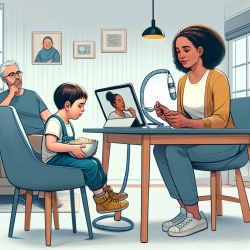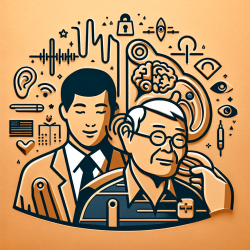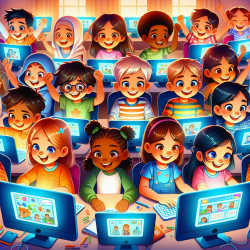In the evolving landscape of healthcare, telemedicine has emerged as a pivotal tool, especially during the COVID-19 pandemic. A recent study titled Usefulness of Telemedicine for Disabled Children Receiving Feeding Therapy sheds light on the efficacy of telemedicine in delivering feeding therapy to children with disabilities. This blog will delve into the findings of this study and provide practical insights for practitioners looking to enhance their skills and outcomes through telemedicine.
Study Overview
The study conducted a retrospective cohort analysis of 374 pediatric patients with dysphagia who visited a specialized dental clinic in Japan between 2019 and 2020. The primary outcome was the feeding developmental stage at the final evaluation. The patients were divided into two groups: in-person therapy and telemedicine-based therapy.
Key Findings
The study revealed that telemedicine can achieve similar therapeutic outcomes as in-person therapy. Here are the key findings:
- Both in-person and telemedicine groups showed significant improvement in the feeding developmental stage from the initial to the final evaluation.
- There was no significant difference in the efficacy of feeding therapy between the two groups.
- The most common improvement was the ability to push mashed food with the tongue against the anterior hard palate, followed by the ability to perform mastication.
Implications for Practitioners
For practitioners, these findings underscore the potential of telemedicine to deliver effective feeding therapy. Here are some actionable steps to implement these insights:
- Initial In-Person Assessment: Conduct an initial in-person session to establish a treatment plan. This allows for a comprehensive evaluation and personalized therapy strategy.
- Utilize Telemedicine for Follow-Ups: Use telemedicine for subsequent sessions to monitor progress, provide guidance, and adjust the treatment plan as needed.
- Leverage Technology: Employ online communication tools and devices like tablets or mobile phones to facilitate seamless telemedicine sessions.
- Focus on Parental Involvement: Engage parents or guardians in the therapy process. Provide them with detailed instructions and training to assist in feeding therapy at home.
- Document and Monitor Progress: Maintain detailed records of each session, including observations, developmental stages, and any changes in the therapy plan.
Encouraging Further Research
While the study provides compelling evidence for the effectiveness of telemedicine, it also highlights the need for further research. Areas for future investigation include:
- Multicenter Studies: Conduct studies across multiple institutions to validate the findings and ensure generalizability.
- Severe Dysphagia Cases: Explore the efficacy of telemedicine for patients with severe dysphagia who are incapable of oral feeding.
- Long-Term Outcomes: Assess the long-term outcomes of telemedicine-based feeding therapy to understand its sustained impact.
In conclusion, telemedicine offers a viable alternative to in-person feeding therapy, providing flexibility and convenience without compromising therapeutic outcomes. By integrating telemedicine into your practice, you can enhance accessibility and improve the quality of care for children with feeding disorders.
To read the original research paper, please follow this Usefulness of Telemedicine for Disabled Children Receiving Feeding Therapy.










